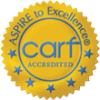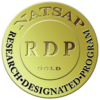Adolescence is often a time of experimentation and boundary-pushing. Sometimes, these normal behaviors can develop into concerning patterns. For instance, teens who start out experimenting with substance use can develop a full-blown substance use disorder. If this is the case for your teenage boy, substance abuse treatment may be the best option.
When you’re ready to start receiving help, reach out to Foothills at Red Oak Recovery experts by calling 866.300.5275 to hear more about how we help adolescent boys achieve sobriety and start a new life in recovery.
What Are the 4 Stages of Addiction?
Substance use disorder doesn’t happen all at once. There are four stages of addiction, progressing from less problematic use to severely disordered patterns. But what are the four stages of addiction, and what can a parent do when they recognize these patterns in their child?
1. Experimentation
The first stage is experimentation. Experimentation isn’t necessarily a problem in itself. It is completely natural for adolescent boys to try out new activities and push the boundaries laid out by society and their parents.
But experimenting with drugs can be a slippery slope, as they can be highly addictive. According to the CDC, the earlier teenagers experiment with drugs, the higher their risk of developing substance use disorder.
2. Regular Substance Use
The next of the four stages of addiction is regular substance use. Many teens find that they enjoy the effects produced by drugs or alcohol. They may begin regularly imbibing on the weekends, after school, or even daily. Regular substance use is when the behaviors begin to get ingrained. This is arguably the best stage to intervene.
3. Risky Substance Use
Risky substance use refers to when teens start to use higher quantities of drugs for longer periods or in situations when it is dangerous to do so. For example, a teenager who has experimented with alcohol may begin to binge drink, putting them at high risk of alcohol poisoning, reckless behavior, and developing a substance use disorder.
Risky substance use doesn’t necessarily indicate dependence, but it is a large, flashing warning sign. Teens who engage in risky substance use have put aside concerns about the dangers of drugs or alcohol.
They may be swayed by social pressure or experiencing symptoms of a mental health condition that pushes them to take unnecessary risks. Over time, they may not be able to control their use of substances.
4. Addiction
Addiction is the final stage. The signs of substance use disorder in teens include:
- Trying to cut down or stop unsuccessfully
- Using greater quantities of alcohol or drugs than intended
- Using for longer than intended
- Using when it is inappropriate to do so, such as during school
- Giving up on hobbies or activities
By this stage, a teen needs professional help to stop substance use and recover safely. Fortunately, substance use disorders are highly treatable, and any teen can achieve recovery.
Recovery at Any Stage
Importantly, substance use treatment can start at any stage. It is a myth that people need to be experiencing severe symptoms to seek treatment or for treatment to work. Intervention from professionals during the experimentation, regular use, or risky use stages is just as effective as during full-blown addiction.
Help Your Teen Boy with Foothills at Red Oak Recovery
If your teenage boy is in one of the four stages, the time to act is now. Call the professionals at Foothills at Red Oak Recovery by dialing 866.300.5275 to learn more about how our facility can help adolescent boys break free from substance use and thrive in recovery.





